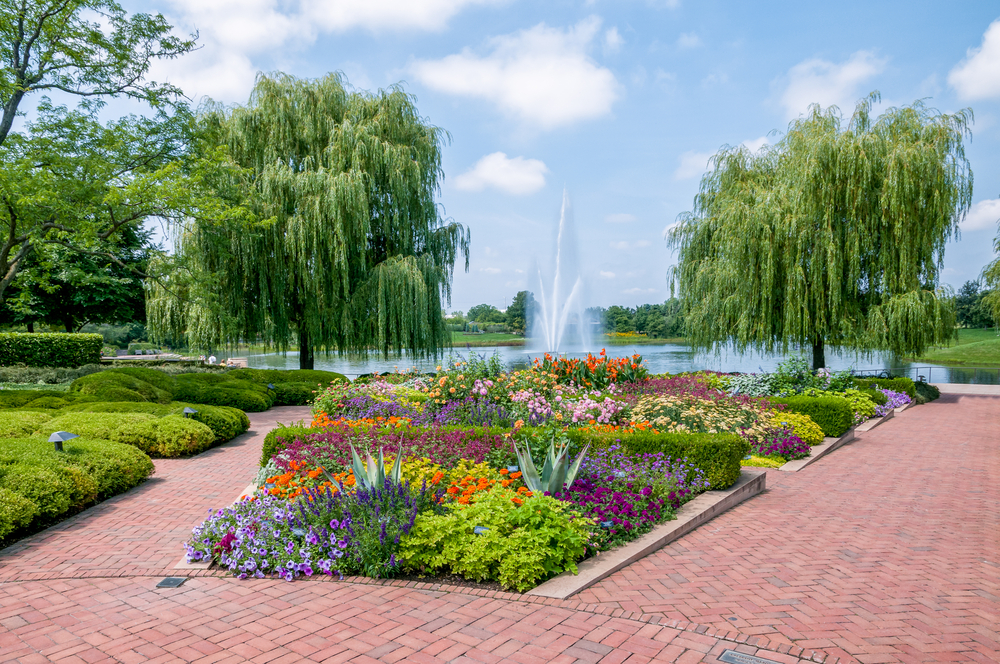Behind a Big Boost for a Legacy Institution, Deep-Pocketed Conservationists
/The Chicago Botanic garden. photo: elesi/shutterstock
Legacy institutions like museums, libraries, zoos and gardens are continually balancing the maintenance of historic missions with efforts to evolve and attract contemporary audiences and funders. For example, in recent years, we’ve seen zoos around the country pull in some big gifts for conservation programs as they tap into environmental philanthropy. In a similar vein, the Chicago Botanic Garden recently received a major boost to its conservation programming with a $10 million gift from the Negaunee Foundation.
A Family Foundation Ramps up Its Giving
The Negaunee Foundation is the philanthropic vehicle of Richard W. Colburn and his wife, Robin. Their family had a net worth of $1.2 billion in 2015 and was on the Forbes “Richest American Families” list that year. Colburn’s late father, Richard D. Colburn, steered Consolidated Electrical Distributors (CED) and was a major financier and advocate of music and music education in Los Angeles. The Negaunee Foundation, which had about $159 million in assets in 2017, has also been a significant backer of the arts, especially music. Its grantees include fine art institutions in Chicago like the Chicago Lyric Opera and the Art Institute of Chicago, as well as some in L.A. It also supports conservative organizations like the Cato Institute and Heritage Foundation. And it has backed environmental organizations like the Nature Conservancy of Illinois and the Audubon Society’s Chicago branch.
In 2014, Negaunee gave $15 million to the Chicago Symphony Orchestra, and the Negaunee Music Institute was named. The recent $10 million gift to the Chicago Botanic Garden names the Glencoe garden’s science program the Negaunee Institute for Plant Conservation Science and Action. The foundation’s giving totaled about $4.5 million in 2011, and nearly $11 million in 2017. Grantmaking is on the rise as the Colburns invest in and leave their mark on local civic institutions in the Windy City.
How the Garden Will Use the Funds
The gift to the Chicago Botanic Garden is the largest in the garden’s history for programming; past eight-figure gifts have supported capital projects. The garden’s Vice President of Science and Chief Scientist Greg Mueller (whose position was previously endowed by Negaunee) tells us that officers of the foundation “have had a relationship with the Chicago Botanic Garden leadership and participated in donor presentations by garden scientists” for years. He says representatives from the garden met with the foundation several times to discuss the current gift, zeroing in on “areas of support” that aligned with both organizations’ interests.
The $10 million gift will be dispersed over five years and will mainly fund the creation of the new Plant Conservation Synthesis Center, which is scheduled to open in 2020. The center plans to bring together scientists, policymakers and other experts to address environmental issues at the local and national level. Invasive species, which threaten native plants, will be one of the first issues to be addressed, according to Mueller.
“Invasive plants are one of the top threats to the woods, prairies and lakes—not just of the Chicago region, but globally,” he says. He says the garden, the foundation and local partners including the Forest Preserve District of Cook County share an interest in addressing this issue.
The new money from Negaunee will also be used to fund science and staff positions and a challenge scholarship grant with the garden’s Plant Biology and Conservation grad program at Northwestern University.
Mueller says the funds will be important to the garden’s science and engagement efforts surrounding the best practices for conserving plants and managing natural habitats. The new center’s findings and recommendations will be communicated “both to the scientific community and the general public.” He also says the money will help the garden train the next generation of plant scientists.
The fresh infusion of funds and the related goals will fuel and shape much of the garden’s future conservation science programming. They are also examples of a legacy institution garnering substantial backing, and how it aims to continue making significant contributions to society in the years to come.







































